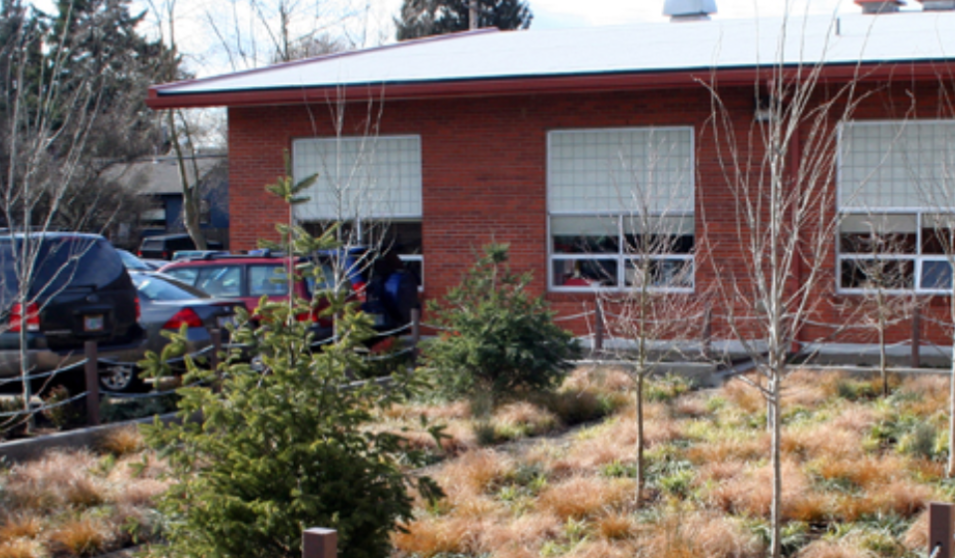By Leif Saveraid, Sustainability Policy Intern--a weekly series.
In an era of increasingly severe rainfall events, managing stormwater runoff is more important than ever. Reducing impermeable surfaces like parking lots and installing rain gardens can help schools improve their local water quality while providing additional habitat for wildlife and educational opportunities.
Historically, native ecosystems prevented up to 90% of water runoff. Native plants and high-quality soils effectively acted like a giant sponge, soaking up rainfall and allowing it to slowly drain into waterways or recharge groundwater aquifers. However, modern roads, parking lots, and lawns do not hold water nearly as well. Especially with high amounts of rainfall, any trash, chemicals, or other pollutants are swept away into local streams and lakes. In addition, this water moves so fast that it can create excessive erosion and flooding. When water does not have time to soak into the ground it cannot recharge local groundwater supplies, which are already overused and under threat in many rural regions.
One of the most popular ways schools have addressed these concerns is by creating rain gardens. Rain gardens capture water runoff and provide a location for it to be naturally filtered and infiltrate into groundwater. Rain gardens usually contain native plants that can deal with flooding and help filter the water. These gardens also enhance aesthetics and provide habitat for insects like butterflies and bees.
Rain gardens can also be used as a teaching tool and incorporated into outdoor classrooms. They have been widely adopted by schools, and instructions on how to create a school rain garden are readily available online, although larger projects may need to be professionally done.
Schools can also replace hard surface parking lots with permeable paving. This can act in a similar fashion to a rain garden by allowing for more rain to be absorbed than a standard asphalt parking lot. These parking lots can also reduce heat island effects because they do not absorb as much heat as black asphalt. An example of the usefulness of these parking lots comes from the Navajo Elementary school, which installed permeable surface parking to reduce flooding in their parking lot. Permeable lots are often paired with a stone reservoir to enable better drainage of the surface and allow better filtering. The downside to permeable surface lots are their construction costs, which are prohibitive for the majority of rural school districts.
By installing rain gardens and permeable parking lots, rural schools can do their part to reduce the pollution of local waterways. Many rural communities face additional problems with water runoff and erosion from crop fields and other areas. Implementing rain gardens and permeable paving at schools represents and opportunity to discuss and provide real world information and expertise to students about these large problems.

